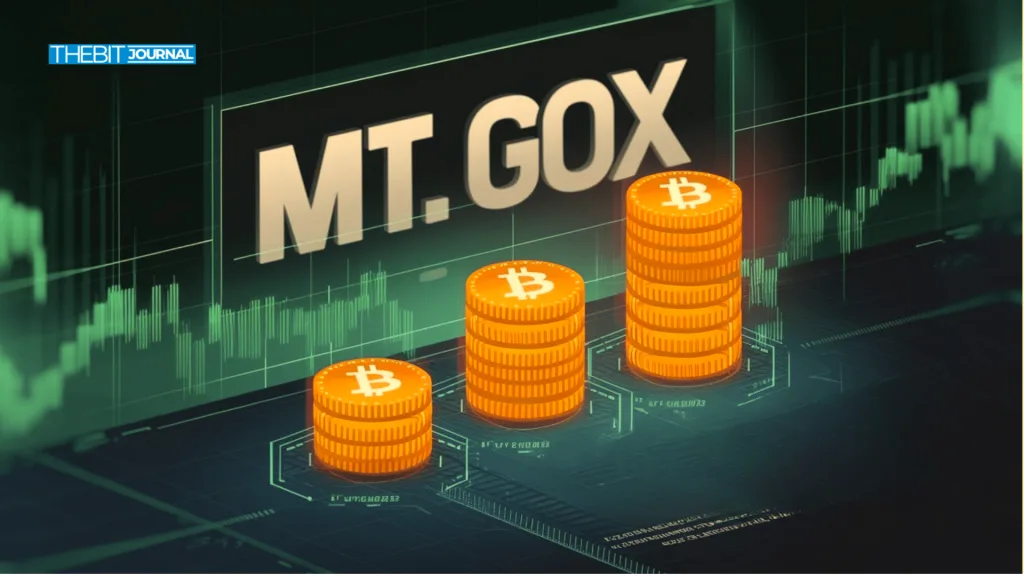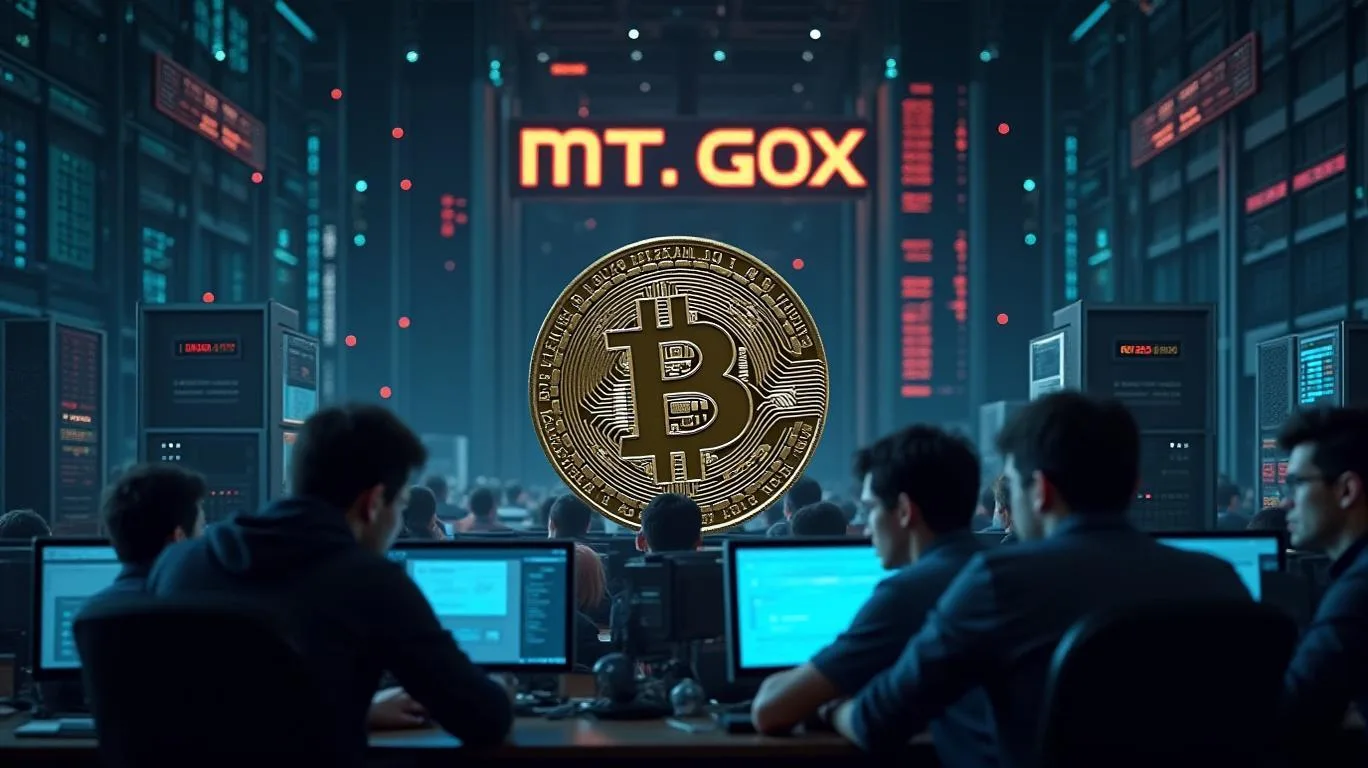In the ever-evolving saga of cryptocurrency’s most infamous exchange, Mt. Gox has once again captured the attention of the crypto world. The Japanese exchange, which spectacularly collapsed in 2014 following a massive hack, has made waves by moving over $1 billion worth of Bitcoin for the third time this month. This latest transaction, occurring on March 25, 2025, has reignited speculation about the long-awaited creditor payouts and the future of the exchange’s substantial remaining assets.
Table of Contents
As the crypto community watches with bated breath, Mt. Gox’s recent activities paint a picture of a dormant giant slowly awakening. The exchange, once the world’s largest Bitcoin marketplace, has been navigating a complex bankruptcy process for over a decade. Now, with each Bitcoin movement, it sends ripples through the market, sparking theories and analysis from experts and enthusiasts alike. This latest transaction, involving 11,501 BTC split between two wallets, is not just a number on a blockchain – it’s a symbol of the ongoing impact of one of crypto’s most significant historical events.
The story of Mt. Gox is more than just a tale of lost Bitcoin; it’s a narrative that encapsulates the early wild west days of cryptocurrency, the risks and rewards of digital assets, and the long road to resolution for those affected by its downfall. As we delve into the details of these recent transactions and their potential implications, we’re not just examining blockchain data – we’re exploring a chapter in the ongoing evolution of the cryptocurrency ecosystem.

The Billion-Dollar Bitcoin Ballet: Mt. Gox’s Latest Moves Decoded
On March 25, 2025, Mt. Gox orchestrated its third major Bitcoin transaction of the month, moving a staggering 11,501 BTC, valued at over $1 billion. This digital asset shuffle saw 893 BTC, approximately $78 million, transferred to the Mt. Gox cold wallet “1Jbez,” while the lion’s share of 10,608 BTC, worth about $929 million, found its way to the Mt. Gox change wallet “1DcoA.”
This latest move is part of a series of significant transactions that have kept the crypto community on its toes throughout March:
| Date | Amount Transferred | Approximate Value |
|---|---|---|
| March 6, 2025 | 12,000 BTC | Over $1 billion |
| March 11, 2025 | 11,833 BTC | Approximately $1 billion |
| March 25, 2025 | 11,501 BTC | Over $1 billion |
These substantial movements have fueled speculation about their purpose, with many in the industry pointing to the ongoing creditor payout process as a potential explanation. Mt. Gox began repaying creditors in 2024, marking a significant milestone in the exchange’s long and tumultuous journey since its 2014 bankruptcy filing.
The bankruptcy, triggered by the loss of 850,000 BTC in a notorious hack, left thousands of creditors in limbo, waiting years for any hope of recovering their funds. The recent extension of the final payout date to October 31, 2025, due to the complex verification process for claimants, has only added to the anticipation surrounding these large-scale Bitcoin transfers.
Interestingly, despite the magnitude of these transactions, the Bitcoin market has remained relatively stable. This marks a departure from past instances where large Mt. Gox transfers sparked fears of potential sell-offs and subsequent price volatility. The market’s muted reaction suggests a maturing attitude towards these movements, with investors and traders seemingly less prone to knee-jerk reactions.
Adding another layer to the intrigue, blockchain analytics firm Spot On Chain reported that some of the earlier March transfers ended up on the Bitstamp exchange. This has led to speculation that the Bitcoin sent to the warm wallet might be poised for further movement, potentially as part of the ongoing creditor payout process.

Despite these significant transfers, Mt. Gox still holds a substantial Bitcoin reserve – approximately 35,000 BTC, valued at around $3.1 billion. This remaining stash has been largely untouched since March 12, serving as a reminder of the exchange’s enduring influence on the cryptocurrency landscape.
As the crypto world watches these developments unfold, the Mt. Gox saga continues to be a testament to the resilience and evolving nature of the cryptocurrency ecosystem. From its rise as a pioneering exchange to its dramatic fall and the subsequent years of legal and financial wrangling, Mt. Gox’s story encapsulates many of the challenges and growing pains faced by the broader crypto industry.
For creditors still awaiting their full repayment, these recent transactions offer a glimmer of hope. Some have already received partial payouts, but the road to full restitution remains long and uncertain. The situation remains fluid, with no clear timeline for the complete distribution of the exchange’s assets.
As we look to the future, the ongoing Mt. Gox bankruptcy proceedings and these recent Bitcoin movements serve as a reminder of the importance of security, transparency, and robust regulatory frameworks in the cryptocurrency space. They also highlight the remarkable resilience of Bitcoin and the broader crypto market, which has not only survived but thrived in the years since Mt. Gox’s collapse.
As the Mt. Gox story continues to unfold, it serves as a powerful reminder of the risks and potential rewards in the world of cryptocurrency. From its humble beginnings to its dramatic fall and ongoing resolution, the exchange’s journey mirrors the broader evolution of the crypto industry. As we watch these billion-dollar Bitcoin movements, we’re not just observing transactions – we’re witnessing a pivotal chapter in the history of digital finance unfold before our eyes.
Pi Coin vs Bitcoin: The Ultimate Cryptocurrency Showdown Is Here!
Frequently Asked Questions
Q1: What caused Mt. Gox to file for bankruptcy in 2014?
Mt. Gox filed for bankruptcy in 2014 after losing 850,000 BTC (worth approximately $460 million at the time) in a massive hack. This event was one of the largest cryptocurrency thefts in history and led to the exchange’s collapse.
Q2: When did Mt. Gox start repaying its creditors?
Mt. Gox began the process of repaying its creditors in 2024, a decade after its bankruptcy filing. The repayment process has been slow and complex due to the large number of claimants and the verification processes involved.






